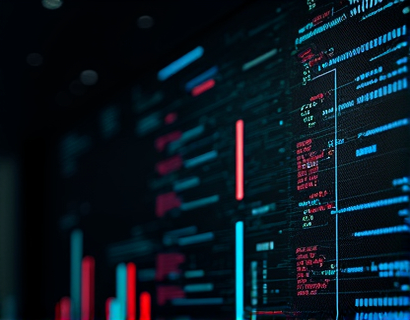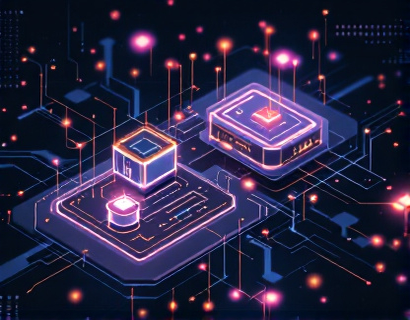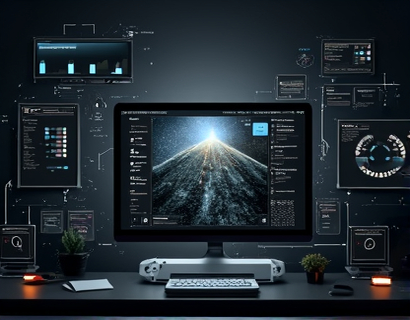Streamlining Digital Currency Innovation: A Comprehensive Guide to Next-Gen Token and Currency Software
In the rapidly evolving landscape of blockchain technology, the creation and management of digital currencies and tokens have become pivotal for businesses and enthusiasts alike. This guide aims to demystify the complex process of developing and managing digital assets, offering insights and tools that cater to both novices and experts. By focusing on advanced software solutions, we explore how to streamline digital currency innovation, ensuring unparalleled customization, robust security, and seamless scalability.
Understanding Digital Currencies and Tokens
Before diving into the software tools, it's essential to grasp the fundamentals of digital currencies and tokens. Digital currencies, often synonymous with cryptocurrencies, are decentralized forms of money that use cryptography for security and operate on blockchain technology. Bitcoin, the first and most well-known cryptocurrency, set the foundation for a new era of financial transactions. Tokens, on the other hand, are digital assets that represent a specific value or utility on a blockchain. They can be used to represent assets, access services, or even vote in decentralized governance systems.
The distinction between cryptocurrencies and tokens lies in their purpose and functionality. While cryptocurrencies like Bitcoin and Ethereum serve as general-purpose money, tokens are often created on existing blockchain platforms to serve specific use cases. For instance, Ethereum's ERC-20 standard allows developers to create tokens that can be used for various applications, from decentralized finance (DeFi) to non-fungible tokens (NFTs) for digital art and collectibles.
Challenges in Digital Currency Development
Developing digital currencies and tokens comes with its own set of challenges. One of the primary hurdles is the technical complexity involved in building a secure and efficient blockchain network. Developers must have a deep understanding of cryptography, consensus mechanisms, and smart contract programming. Additionally, ensuring compliance with regulatory requirements adds another layer of complexity, as different jurisdictions have varying laws and regulations governing digital assets.
Scalability is another critical issue. As the number of users and transactions grows, the blockchain must handle increased load without compromising performance. This requires robust infrastructure and innovative solutions to manage transaction throughput and reduce latency. Security is paramount, as any vulnerability can lead to significant financial losses and undermine user trust. Ensuring the integrity and immutability of the blockchain is essential to maintaining the trust of the community.
Advanced Software Solutions for Digital Currency Development
To overcome these challenges, advanced software solutions have emerged, designed to simplify the process of creating and managing digital currencies and tokens. These platforms offer a range of features that cater to different stages of development, from initial concept to deployment and maintenance.
One key aspect of these software solutions is customization. Businesses and developers can tailor the blockchain to fit their specific needs, whether it's creating a private blockchain for internal use or a public blockchain for widespread adoption. Customization options include selecting the appropriate consensus mechanism, defining token economics, and integrating specific functionalities.
Security is another cornerstone of these platforms. They provide built-in security features such as multi-signature wallets, cold storage options, and regular security audits. Smart contract verification tools help identify and mitigate potential vulnerabilities, ensuring that the code is robust and secure. Additionally, these platforms often offer real-time monitoring and alert systems to detect and respond to security threats promptly.
Scalability is addressed through advanced architecture and optimization techniques. Sharding, sidechains, and layer 2 solutions are some of the methods employed to increase transaction throughput and reduce congestion. These technologies allow the blockchain to handle a higher volume of transactions without sacrificing performance or security. Automated scaling features ensure that the network can adapt to changing demands, maintaining smooth operations even during peak times.
Key Features of Next-Gen Token and Currency Software
Next-generation token and currency software platforms come packed with features that streamline the development process and enhance the overall user experience. Here are some of the key features to look out for:
- User-Friendly Interfaces: Intuitive dashboards and interfaces make it easier for developers of all skill levels to navigate and manage their blockchain projects. Visual tools and drag-and-drop functionalities reduce the learning curve and increase productivity.
- Comprehensive Documentation and Support: Extensive documentation, tutorials, and community support are crucial for both new and experienced developers. Detailed guides, code examples, and active forums provide the necessary resources to overcome challenges and optimize projects.
- Modular Architecture: A modular design allows for flexible integration of different components and plugins. This approach enables developers to build custom solutions tailored to their specific requirements, enhancing functionality and performance.
- Multi-Chain Support: The ability to interact with multiple blockchains simultaneously is a valuable feature. This interoperability allows for seamless asset transfer and cross-chain transactions, expanding the potential use cases and user base.
- Advanced Analytics and Reporting: Built-in analytics tools provide insights into network performance, user behavior, and transaction patterns. These insights help developers make data-driven decisions and optimize their blockchain for better outcomes.
- Compliance and Regulatory Tools: Features that assist with compliance, such as KYC (Know Your Customer) and AML (Anti-Money Laundering) integrations, are essential for businesses operating in regulated environments. These tools help ensure that the blockchain adheres to legal standards and minimizes risks.
Case Studies and Real-World Applications
To illustrate the practical applications of these advanced software solutions, let's look at a few case studies:
One notable example is a decentralized finance (DeFi) platform that used a next-gen token software to create a custom token for lending and borrowing services. The platform leveraged the software's modular architecture to integrate various financial instruments and compliance tools, ensuring a secure and compliant service. The result was a robust DeFi ecosystem that attracted a large user base and significant investment.
Another case involves an NFT marketplace that utilized the software to develop a unique token for digital art sales. The platform's advanced analytics features provided valuable insights into artist popularity and market trends, helping curators make informed decisions. The interoperability with other blockchains allowed for seamless asset transfers, enhancing the user experience and expanding the marketplace's reach.
These examples demonstrate the versatility and effectiveness of advanced token and currency software in real-world scenarios, proving their value across different industries and use cases.
Future Trends and Innovations
The landscape of digital currency and blockchain technology is continually evolving, with several trends and innovations on the horizon. One significant trend is the rise of decentralized autonomous organizations (DAOs), which use smart contracts to govern and manage community-driven projects. DAOs offer a new model for decentralized governance, enabling more democratic and transparent decision-making processes.
Another area of innovation is the integration of blockchain with other emerging technologies, such as the Internet of Things (IoT) and artificial intelligence (AI). These integrations can lead to more efficient and intelligent systems, from smart contracts that automate complex processes to AI-driven analytics for enhanced decision-making.
Furthermore, the development of cross-chain bridges and interoperability protocols is set to revolutionize the way different blockchains interact. This will enable a more connected and cohesive blockchain ecosystem, where assets and data can flow freely across multiple networks, opening up new possibilities for collaboration and innovation.
Conclusion
Streamlining digital currency innovation through advanced software solutions is essential for businesses and blockchain enthusiasts looking to navigate the complex world of blockchain technology. These platforms offer unparalleled customization, robust security, and seamless scalability, making it easier than ever to create and manage digital currencies and tokens. By leveraging these tools, developers can overcome technical challenges, ensure compliance, and build scalable and secure blockchain projects. As the industry continues to evolve, embracing these innovations will be key to staying ahead and capitalizing on the vast potential of digital assets.










































